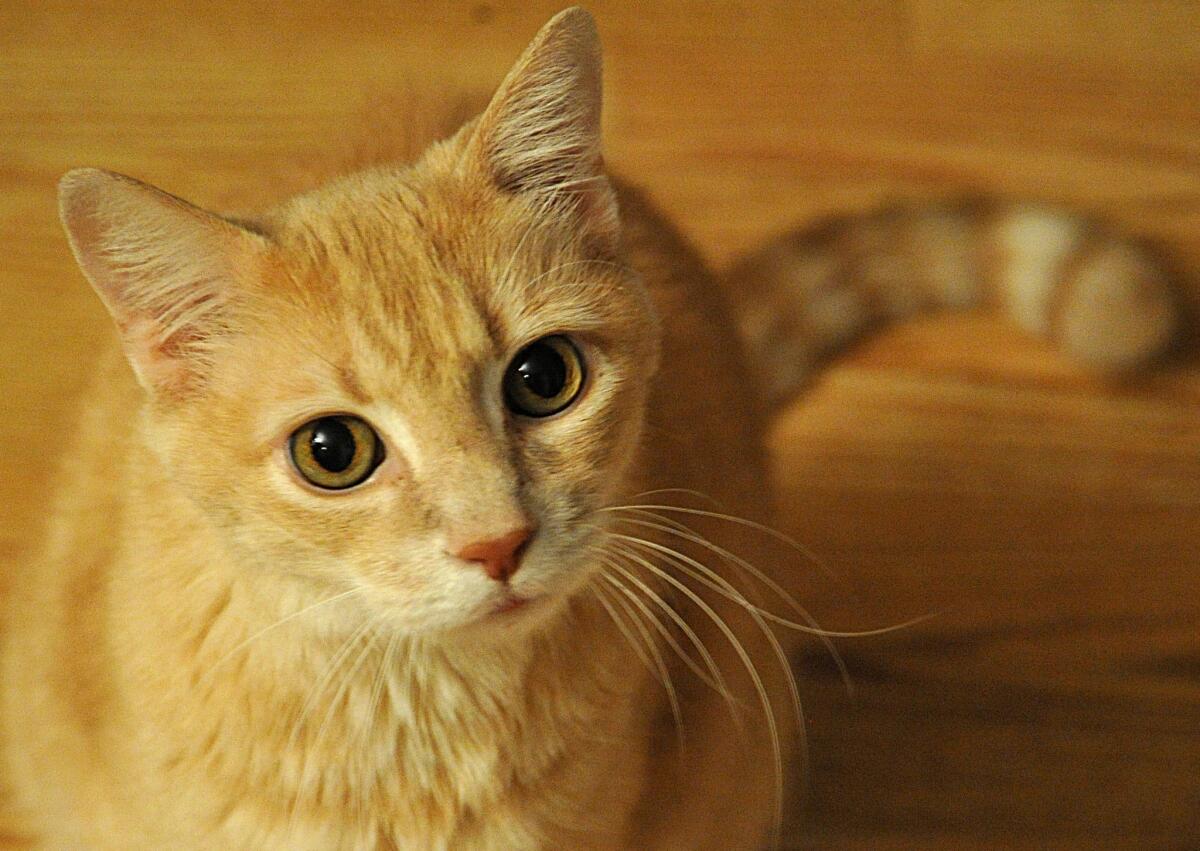Semi-domesticated? House cats not far removed from wild, genome shows

- Share via
It may not surprise the average cat owner, but a team of researchers has discovered that the genome of domestic mousers differs only slightly from that of wildcats.
In other words, after 9,000-odd years of living alongside humans, the house cat remains only semi-domesticated, according to a report published this week in the Proceedings of the National Academy of Sciences.
After comparing the genome of an Abyssinian cat named Cinnamon with those of humans, tigers, cows, dogs and another cat breed known as the Birman, the scientists found that cats retain many of the hunting, sensory and digestive traits of their wild kin.
Researchers did find a signal for human influence on cat evolution, however, in fur color and pattern, as well as a set of genes that are thought to be associated with tameness.
“We believe we have created the first preliminary evidence that depicts domestic cats as not that far removed from wildcat populations,” said senior author Wes Warren, an associate professor of genomics at the Genome Institute at Washington University in St. Louis.
The discovery that as few as 13 genes may separate domestic cats from their wild ancestors was a “genuinely important” advance, according to John Bradshaw, an anthrozoologist at the University of Bristol School of Veterinary Sciences in Britain, who was not involved in the research.
“This can only be the beginning of what will surely lead to a revolution in cat breeding,” Bradshaw wrote.
By pinpointing genes responsible for cat behavior and temperament, humans could more easily guide more changes in the animal.
“The potential is there to finally guide the cat through the remaining stage of domestication, not only producing cats that are better adapted to the demands of 21st century living, but at the same time enhancing their well being,” Bradshaw wrote.
Unlike dogs, which some researchers say began their association with humans roughly 30,000 years ago, archaeological evidence suggests that cats first entered our living space when we began to grow crops, about 10,000 years ago.
Researchers hypothesize that early farmers welcomed the felines because they hunted grain-eating rodents. Farmers rewarded the efficient rodent-slayers with extra food, researchers say.
Yet it’s only in the last 200 years that humans have placed intense selection pressure on cats, producing up to 40 different breeds, Warren said.
Warren and his colleagues said that this relatively short period of breeding was partly responsible for the modest influence domestication has had so far on the evolution of Felis silvestris catus. However, it wasn’t the only reason.
“Most importantly, some continue to interbreed with wildcat populations,” Warren said.
When examining the cat’s genetic makeup, the researchers found that the animals retained qualities of wild hypercarnivores — hunters that eat meat almost exclusively.
“Carnivores are endowed with extremely acute sensory adaptations, allowing them to effectively locate potential prey before being discovered,” the authors wrote. “Within carnivores, cats have the broadest hearing range, allowing them to detect both ultrasonic communication by prey as well as their movement.”
In addition to retaining visual acuity that enables them to hunt in low-light conditions, cats are also able to metabolize high-protein, high-fat diets.
“Cats fed a diet rich in saturated and polyunsaturated fatty acids showed no effects on plasma lipid concentrations that in humans are risk factors for coronary heart disease and atherosclerosis,” the authors wrote.
Researchers have hypothesized that the cat’s peculiar, meat-intensive diet is one of the reasons it has existed on the edge of domestication. Dogs can be kept and bred on a vegetarian diet, which is much more difficult with cats.
Prior to the development of nutritionally sustaining pet foods, cats most likely had to rely on their hunting skills to obtain sufficient meat.
Though breeding of cats has focused mostly on controlling hair color and pattern, the authors identified gene changes that some researchers say are associated with the “domestication syndrome hypothesis.”
That hypothesis argues that when animals are bred for domestication, changes occur in a group of embryonic stem cells called the neural crest. These changes can result in diminished fearfulness and other qualities that appeal to humans. The hypothesis has yet to be proved experimentally, however.
“Our results suggest that selection for docility, as a result of becoming accustomed to humans for food rewards, was most likely the major force that altered the first domesticated cat genomes,” authors wrote.
Today, it’s believed that there are as many as 600 million cats worldwide.
Follow @montemorin for science news







